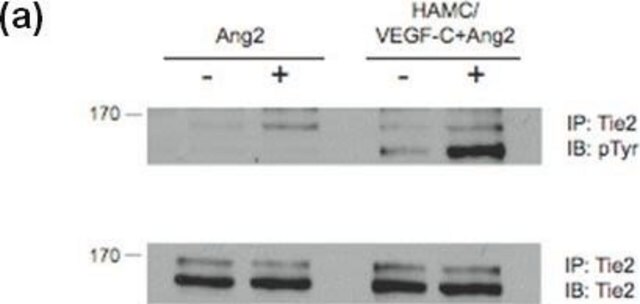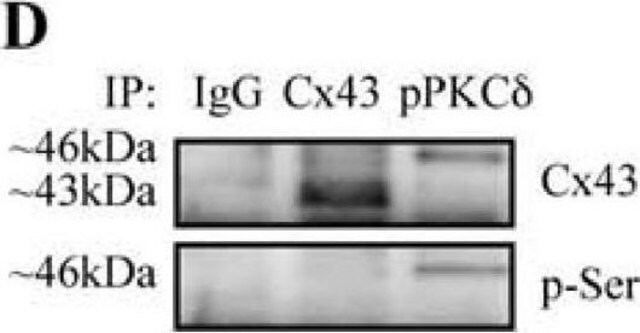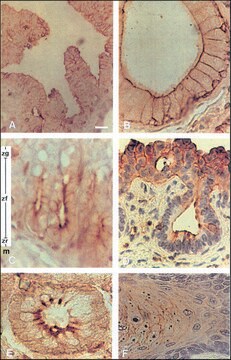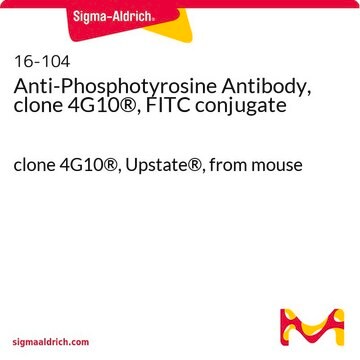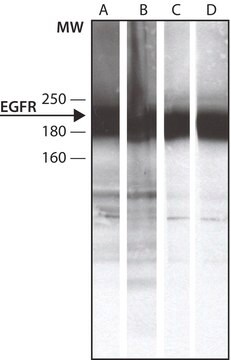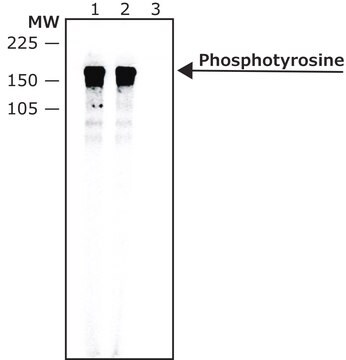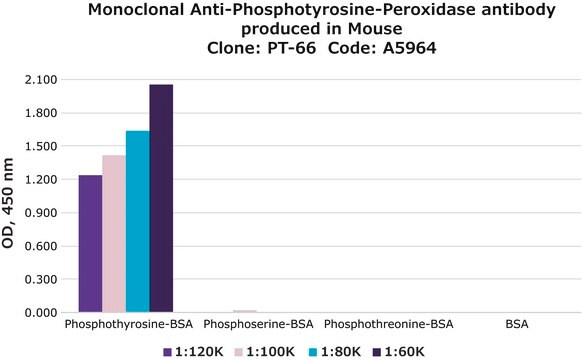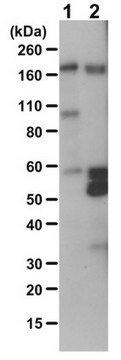P5872
Anti-Phosphotyrosine antibody, Mouse monoclonal
clone PT-66, purified from hybridoma cell culture
Synonyme(s) :
Monoclonal Anti-Phosphotyrosine, Phospho-Tyr, Phospho-tyrosine, p-Tyr
About This Item
Produits recommandés
Source biologique
mouse
Niveau de qualité
Conjugué
unconjugated
Forme d'anticorps
purified immunoglobulin
Type de produit anticorps
primary antibodies
Clone
PT-66, monoclonal
Forme
buffered aqueous solution
Conditionnement
antibody small pack of 25 μL
Concentration
~2 mg/mL
Technique(s)
flow cytometry: suitable
immunocytochemistry: suitable
immunohistochemistry: suitable
immunoprecipitation (IP): suitable
indirect ELISA: 0.5-1.0 μg/mL using phosphotyrosine conjugated to BSA
radioimmunoassay: suitable
western blot: 0.25-0.5 μg/mL using total cell extract of human platelets
Isotype
IgG1
Conditions d'expédition
dry ice
Température de stockage
−20°C
Modification post-traductionnelle de la cible
unmodified
Vous recherchez des produits similaires ? Visite Guide de comparaison des produits
Description générale
Spécificité
Immunogène
Application
- immunoblotting,
- immunofluorescence,
- immunohistochemistry
- immunocytochemistry
- flow cytometry
- immunoprecipitation
- enzyme linked immunosorbent assay (ELISA)
- radio immunoassay (RIA)
- immunoaffinity isolation
Actions biochimiques/physiologiques
Forme physique
Clause de non-responsabilité
Vous ne trouvez pas le bon produit ?
Essayez notre Outil de sélection de produits.
Code de la classe de stockage
12 - Non Combustible Liquids
Classe de danger pour l'eau (WGK)
WGK 2
Point d'éclair (°F)
Not applicable
Point d'éclair (°C)
Not applicable
Faites votre choix parmi les versions les plus récentes :
Déjà en possession de ce produit ?
Retrouvez la documentation relative aux produits que vous avez récemment achetés dans la Bibliothèque de documents.
Les clients ont également consulté
Articles
Review a high-throughput ELISA-based method to identify peptide substrates for class-specific and/or enzyme-specific Protein Tyrosine Kinases (PTKs) that can be utilized for the detection of kinase activity both in vivo and in vitro.
Notre équipe de scientifiques dispose d'une expérience dans tous les secteurs de la recherche, notamment en sciences de la vie, science des matériaux, synthèse chimique, chromatographie, analyse et dans de nombreux autres domaines..
Contacter notre Service technique